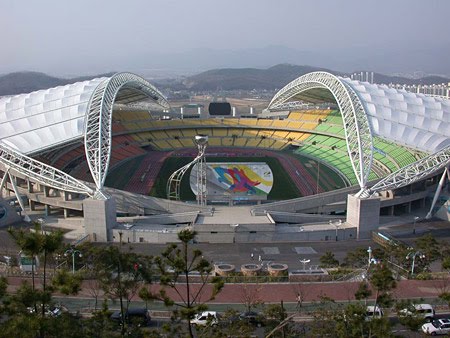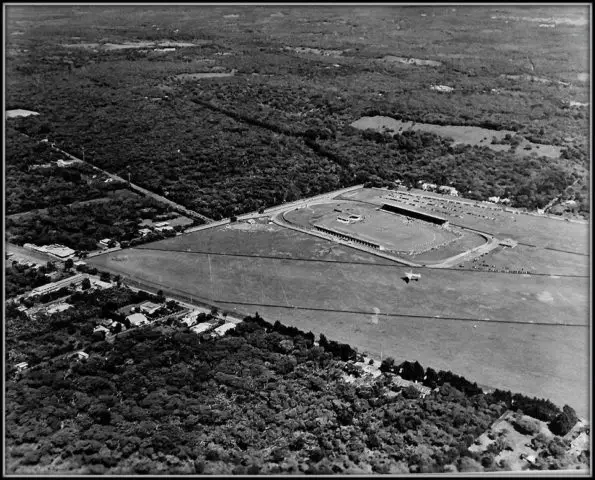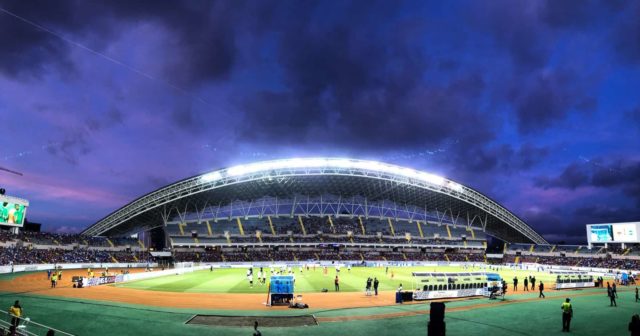
The National Stadium of Costa Rica is an enclosure for multiple sports and administrative uses, being the main one for the practice of Football (soccer) by the National Selection and athletics competitions.
It is the most modern and technologically advanced football stadium in Central America and the Caribbean. With offices for 32 sports federations, two giant HD television screens, a sports museum, a running track and spaces for other sports such as table tennis, fencing, and chess.
In May 2008, the former National Stadium was demolished, and from March 2009 to December 2010 this modern sports venue was built in the same place, located in the La Sabana Metropolitan Park, in San José, Costa Rica.
Popularly it has begun to be known as “La Joya de La Sabana” (The Jewel of the Prairie), thanks to its allusive and modern architecture. The new National Stadium has become an iconic structure for the city of San José as it has come to sit imposingly in the urban landscape embellishing and modernizing the capital of the country.
History

In 2007, the government of Óscar Arias Sánchez decided that the country should have a modern national stadium, for that year modern stadiums were being built in China on the occasion of the Beijing 2008 Olympic Games. The national government established diplomatic relations with the People’s Republic of China and reached multiple bilateral agreements, in one of them China agreed to help create a new National Stadium for Costa Rica.
First, the capacity of 40,000 fans was pursued; however, months later it was reduced to 35,000 for the space available in the same place as the previous one. Other aspects under discussion were based on the location of the Stadium next to a National Park, comfort for the spectators, accessibility and the available amount of parking spaces.
Its construction officially began on March 12, 2009, with the first stone lay. The building was part of the agreements signed between the presidents of Costa Rica and the People’s Republic of China, Óscar Arias Sánchez and Hu Jintao, respectively.
It was constructed by the Chinese company Anhui Foreign Economic Construction (AFECC) in 22 months. As reported to local media, the construction was completed in full one month ahead of schedule. The completion of all the works took place in December 2010 and the official delivery of the property to the Government of Costa Rica was on Monday, January 10, 2011. It was received by the Costa Rican government after several weeks of sound tests in the giant television screens and other operating systems of the property.
On the other hand, the Government of Costa Rica would make a popular consultation for choosing its name, although historically it has always been called only “The National Stadium”. It is considered to be the most modern stadium in Central America, with state-of-the-art lighting (3400 luxes) required for broadcasts in high definition television.
Cost of the Project
Although initially it was scheduled to cost $ 88 million, some sources cited that the new National Stadium finally had a total cost of around $ 110 million, given that all the furniture of the administrative offices and the ticket office area had not been contemplated. The cost difference was made by the Government of China, a country that donated the entire infrastructure. Final calculations estimated that the total work has a value of $83 million and its annual maintenance would be around $ 1.8 million.
The Grand Opening

The official inauguration was held on Saturday, March 26, 2011, with a Football match between the National Selection and the Chinese national football team (ending in a tie 2-2), with the first goal in the stadium marked by Álvaro Saborío in the 39.11th minute. The occasion was also used to honor the historic scorer of the Costa Rican national team, Rolando Fonseca.
On Thursday, March 31, a fight was held for the world boxing title between the Tica Hanna Gabriel, defending world champion of the super welterweight against the American Melisenda Pérez ending with a technical knockout by the Tica against the American boxer. To conclude with the special events, the Colombian singer Shakira appeared on Sunday, April 10, 2011, after 15 years of not performing in Costa Rica.
Sports events
San José hosted the Central American Sports Games in 2013 and both the National Stadium and the La Sabana Metropolitan Park were the scenes of much of the events along with the Sports City of Hatillo, south of the capital.
The National Stadium of Costa Rica hosted the 2014 U-17 Women’s World Cup, with 6 group stage matches, 2 quarter-finals, in addition to the match for the 3rd place and the grand final of the World Cup.
Mission and vision of this sports venue
To be the meeting point for all the Costa Rican society, the center par excellence of sport and recreation, in which the country reaches the maximum sense of pride in its nationality, culture, and sports and artistic abilities. The 1065-ICODER-BNCR Trust, which manages the National Stadium of Costa Rica, in its commitment to motivate and incentivize Costa Rican society reaching its maximum expression of pride, has committed itself to different institutions, organizations, government entities, and social causes, achieving social responsibility within the facilities of the National Stadium.
Among some of the social responsibility events, we could mention are the great annual event “90 minutes for Life” organized by the Association Fight Against Childhood Cancer, also the “Christmas Party for children” of the Association Works of the Holy Spirit, guided visits to schools of scarce resources and remote areas of the country, loan transfer events for sports federations of different disciplines such as Athletics tournaments, the Pan American Archery tournament in 2016, the National Student Games, among many others in which Trust 1065, the Administrative Board and the Administration of the National Stadium are very pleased to receive.


